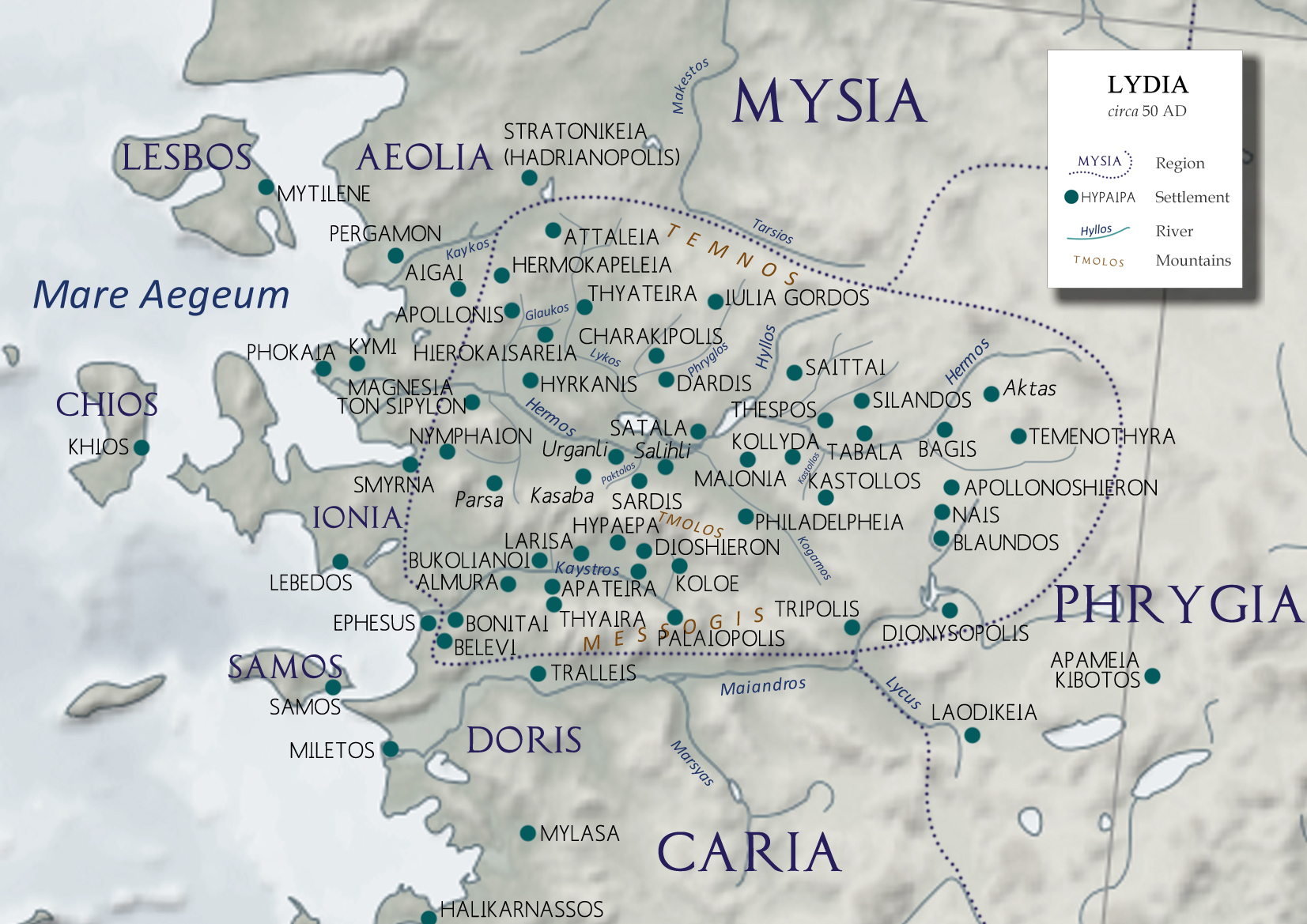Hyrcania (Lydia) on:
[Wikipedia]
[Google]
[Amazon]

 Hyrcanis or Hyrkaneis, also known as Hyrcania (), was a
Hyrcanis or Hyrkaneis, also known as Hyrcania (), was a
p887

 Hyrcanis or Hyrkaneis, also known as Hyrcania (), was a
Hyrcanis or Hyrkaneis, also known as Hyrcania (), was a Roman
Roman or Romans most often refers to:
*Rome, the capital city of Italy
*Ancient Rome, Roman civilization from 8th century BC to 5th century AD
*Roman people, the people of Roman civilization
*Epistle to the Romans, shortened to Romans, a letter w ...
and Byzantine
The Byzantine Empire, also known as the Eastern Roman Empire, was the continuation of the Roman Empire centred on Constantinople during late antiquity and the Middle Ages. Having survived the events that caused the fall of the Western Roman E ...
-era city and bishopric
In church governance, a diocese or bishopric is the ecclesiastical district under the jurisdiction of a bishop.
History
In the later organization of the Roman Empire, the increasingly subdivided provinces were administratively associate ...
in ancient Lydia
Lydia (; ) was an Iron Age kingdom situated in western Anatolia, in modern-day Turkey. Later, it became an important province of the Achaemenid Empire and then the Roman Empire. Its capital was Sardis.
At some point before 800 BC, the Lyd ...
, now in western Turkey. It was situated in the Hyrcanian plain The Hyrcanian plain () was a plain near Sardis, the provincial capital of the Achaemenid Empire, Achaemenid Persian satrapy (province) of Lydia (satrapy), Lydia. Located in the Hermos valley, in what is present-day western Turkey, according to the a ...
(τὸ Ὑρκάνιον πεδίον), which is said to have derived its name from a colony of Hyrcanians being settled here by the Persians
Persians ( ), or the Persian people (), are an Iranian ethnic group from West Asia that came from an earlier group called the Proto-Iranians, which likely split from the Indo-Iranians in 1800 BCE from either Afghanistan or Central Asia. They ...
. They were afterwards mingled with some Macedonians, who also settled in this district, whence they are called by Pliny the Elder
Gaius Plinius Secundus (AD 23/24 79), known in English as Pliny the Elder ( ), was a Roman Empire, Roman author, Natural history, naturalist, and naval and army commander of the early Roman Empire, and a friend of the Roman emperor, emperor Vesp ...
and Tacitus
Publius Cornelius Tacitus, known simply as Tacitus ( , ; – ), was a Roman historian and politician. Tacitus is widely regarded as one of the greatest Roman historians by modern scholars.
Tacitus’ two major historical works, ''Annals'' ( ...
"Macedones Hyrcani." The city minted its own coins.
Its site is located west of Halit Paşa in Asiatic Turkey, south of Çamlıyurt.
The city was also the seat of an ancient bishopric
In church governance, a diocese or bishopric is the ecclesiastical district under the jurisdiction of a bishop.
History
In the later organization of the Roman Empire, the increasingly subdivided provinces were administratively associate ...
. Known bishops include:
* Asyncritus
*John, attendee at First Council of Constantinople
The First Council of Constantinople (; ) was a council of Christian bishops convened in Constantinople (now Istanbul, Turkey) in AD 381 by the Roman Emperor Theodosius I. This second ecumenical council, an effort to attain consensus in the ...
*Eustathius
*Dionysius fl.
''Floruit'' ( ; usually abbreviated fl. or occasionally flor.; from Latin for 'flourished') denotes a date or period during which a person was known to have been alive or active. In English, the unabbreviated word may also be used as a noun indic ...
1157Michel Le Quien
Michel Le Quien (8 October 1661, Boulogne-sur-Mer – 12 March 1733, Paris) was a French historian and theologian.
Biography
Le Quien studied at , Paris, and at twenty entered the Dominican convent in Faubourg Saint-Germain, where he made ...
, ''Oriens christianus'p887
References
{{Authority control Catholic titular sees in Asia Defunct dioceses of the Ecumenical Patriarchate of Constantinople Dioceses established in the 1st century Ancient Greek archaeological sites in Turkey Populated places in ancient Lydia Roman towns and cities in Turkey Former populated places in Turkey Populated places of the Byzantine Empire History of Manisa Province